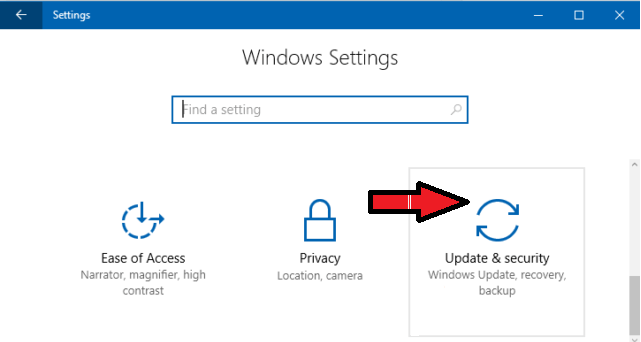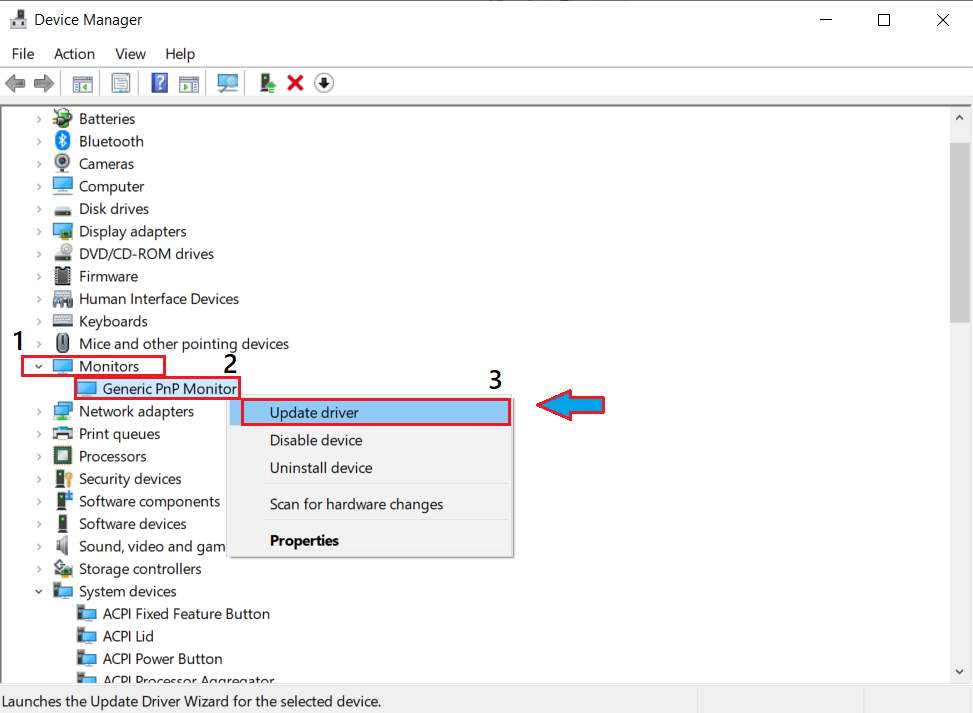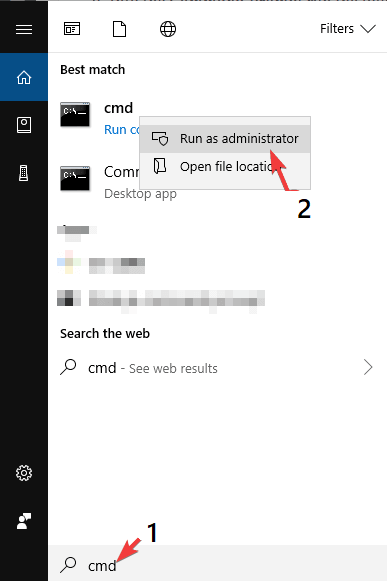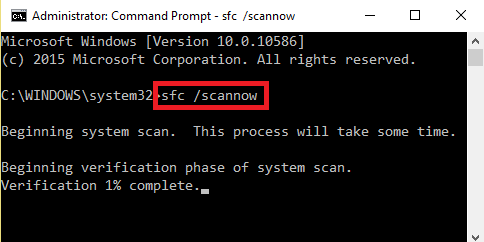Instead of the make and model of the brand, a lot of users observe a generic PnP monitor listed as the primary monitor on games and other software. This is basically your windows operating system not being able to recognize the monitor. In this guide, we will understand why generic PnP monitors appear and what you can do to resolve it. Stick until the end of this guide to get the perfect solution.
What is a Generic PnP Driver?
A generic PnP driver, as the name suggests, is a common driver designed to work with all types of PnP displays. If your monitor’s original driver is missing or if windows could not recognize the original monitor, it will install a generic PnP driver instead to offer visuals on the display. If you are seeing a generic PnP monitor instead of your own monitor in games, software, and even on system settings, it means you need to take some action to get your monitor registered in your windows OS. You can do that by following our guide. Here, we will discuss why generic PnP monitors appear instead of the designation of your monitor and how to resolve that. But before that, let’s take a look at some common reasons behind the appearance of the Generic PnP monitor.
Reasons Behind Generic PnP Driver Error
The basic reason behind a generic PnP driver error is your operating system failing to recognize the hardware. But, this is the resultant error that could be caused by many small issues. If there is a problem with the driver, you would get the failed to load driver hardware notice from your system. Also, you will be notified by a small yellow exclamation mark next to your monitor in the device manager. In case you are not seeing any one of the problems mentioned above, you should check for some additional problems like connectivity problems or even faulty hardware in some cases. The problem can also arise because of the incompatibility of the display unit as well as the graphic card which you are using for the display.
How Does A Generic PnP Monitor Appear?
If this is the first time you are seeing a generic PnP monitor instead of your display, it means that it has appeared because of recent changes in your system. If you are seeing generic PnP drivers in only a single program, it means there is a problem with the program and not with your system. But, if your monitor is listed as a generic PnP monitor everywhere, you should check the device manager to confirm the problem. In the device manager, expand the monitor section to check the problem. If you are seeing a generic PnP monitor even in the device manager, it means you will have to follow the solutions given here for resolving the issue. It can be caused by various reasons such as recent Windows upgrades which may have caused problems with the drivers. It might also appear after you have connected a secondary monitor to the same graphics card. It alters the primary monitor from its original name to a generic PnP monitor and offers the make and model of the secondary monitors. Another reason for the appearance is the use of incompatible HDMI or VGA cables.
Solutions for Generic PnP Monitor Problem
Here, we are offering some handy solutions for the generic PnP monitor problem. Once you go through these solutions, generic PnP titles will be replaced by the original name of your monitor for good. All you will have to do is follow the steps carefully and make sure you do not miss any important steps.
Fix 1: Check The Connection To The Monitor Port
The main reason monitors get detected as generic PnP monitors is the faulty connection with the system. To make sure this is not the problem in your case, simply follow these steps.
First of all, turn OFF the computer. Disconnecting peripherals from your computer when the system is ON might cause further problems. Once the system is OFF, disconnect the main power supply. Now, remove the power cord from the monitor and see if the port or the cable is damaged in any way. Try cleaning the port as well as the internal part of the connection of the cable to clear any dust or dirt which might be causing connection issues. Once you reconnect the cable with the monitor, turn on your system and check if the issue is resolved.
Fix 2: Take a Look at Pending Windows Updates
If the problem has started after a recent windows update, then you should certainly pay attention to the pending updates as it might fix the problem for you. Generally, users report the errors caused by recent updates to Microsoft which are resolved in subsequent windows updates. Therefore, you need to make sure your system is up to date to resolve the issue. To check windows updates, follow these steps. Press Windows key+i to open windows settings
Scroll down on this window and select the “Update and Security” tab.
Here, you can check the OS info as well as the status of the windows update. On this page, there is a “Check for updates” button provided on the top. Click on it to start checking for the windows updates. Now, windows will check for available updates. If an update is available, you will be prompted to download and install the update according to your convenience.
Fix 3: Verify Your Monitors Driver
If the windows update did not solve your issue, you can try to manually verify the display drivers in your system. This solution is proven to have worked for a lot of users. To verify your monitor drivers, follow the steps given here.
Open the start menu and search for “device manager” in the search bar. Click on the top result to open the device manager. Here, locate the section where you see generic PnP monitors and choose the update driver option from the additional settings. Now, a new window will open where windows will guide you upon updating the driver. Make sure you have an active internet connection and select the first option. Windows will now look for the drivers on the internet and download it automatically. Once installation is completed, simply restart your system, and you will see your monitor’s original name.
Fix 4: Check Your Display Card Driver For Problems
While the problem is mostly caused by software issues, you should not neglect the possibility of driver issues on your graphics card that might cause your monitor to appear as a generic PnP device. To see if the problem is caused by your display card driver, simply check the update available for your GPU driver. You can download the latest driver directly from the Nvidia or AMD website for manual installation. Or you can use manufacturer made programs like Nvidia Geforce Experience to update the drivers. You can also use third-party software which will search and update the drivers for you. Once your GPU driver is updated, your system might recognize the monitor again and replace generic PnP monitor titles with the actual names.
Fix 5: Try Resetting Generic PnP Monitor
Generic PnP itself is a driver used for monitors. Therefore, you probably need to reset this driver instead of changing anything else. The driver can easily be controlled by the device manager as it is listed under the monitor section.
Open the device manager on your Windows 10 computer. Head over to the generic PnP device and right-click on it. Choose the “Uninstall device” option from the list. Now, wait until the process is completed. Once the driver is uninstalled, simply restart your computer. While you reboot your system, Windows will recognize the display as new hardware and try to install drivers for it.
Fix 6: Check For Damaged System Files
Lastly, we will suggest using the command prompt to fix generic PnP monitor problems. The command prompt is a very handy tool for Windows and you can use it for scanning and troubleshooting a lot of problems with the OS. Here’s how to fix generic PnP monitor issues via the command prompt.
Open command prompt as administrator.
Now, type sfc/scannnow in the window and press enter. This will execute the basic scanning command.
This command basically activates the system file checker, which scans your computer for damaged files and attempts to repair them. If the issue was caused by a certain corrupted file, this solution will take care of the problem for you.
Conclusion
If you have multiple monitors, generic PnP monitor issues make it confusing to detect your primary and secondary monitors. Furthermore, you may even miss out on some features of your monitor if the drivers are not properly installed. In this guide, we have discussed the reasons behind the driver problem in Windows computers and offered some solutions for the issue. We hope that after reading our guide, you were able to fix the problem with ease. If so, let us know your thoughts in the comment section. Comment * Name * Email * Website
Δ











![]()